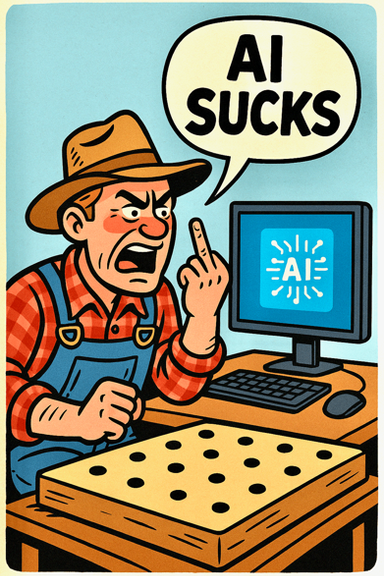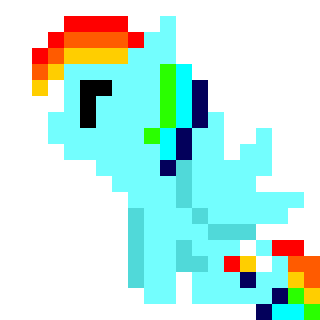HOME | DD
 dziadek1990 — Binary Mane 6
dziadek1990 — Binary Mane 6

Published: 2013-01-19 21:21:02 +0000 UTC; Views: 3989; Favourites: 25; Downloads: 67
Redirect to original
Description
Each row of cubes (ones) and empty spaces (zeroes) is a binary representation of a letter from pony's name.Related content
Comments: 14

Could you do it with Pinkie's full name? (Pinkamena Diane Pie)
👍: 0 ⏩: 0

O-o how do you understand such a thing... since im artsy i dont even do good at math at all!!!!
👍: 0 ⏩: 1

Just googled "Binary translator" and inputed the names of the characters into it (personally I know only how to represent NUMBERS in binary, and nothing else).
👍: 0 ⏩: 2

Well, they still are numbers, characters have assigned value in the ASCII table. Specifically 65-90 for upper-case alphabet and 97-122 for lower-case alphabet.
Those numbers should fit each row.
👍: 0 ⏩: 0

aha.... yeah i cant even begin to understand binary....
👍: 0 ⏩: 1

Cubes are worth 64, 32, 16, 8, 4, 2, 1 from left to right (each one double than the next). Adding the ones in each row will give you a number. 👍: 0 ⏩: 1
ASCII has A=65, B=66, ..., Z=90 a=97, b=98, ..., z=122,

O-o I still don't know...
👍: 0 ⏩: 3

Also apparently the translator dziadek1990 used distinguishes between Upper and lower cases of letters, so that's why the code for the first "A" in "Applejack" is different from the last "a" which is a different character in ASCII code.
👍: 0 ⏩: 1

Hmm Sheesh, I don't think I could've figured that out. Thank you for sharing! ^^
👍: 0 ⏩: 1

Yup, just confirmed, if you want check it out, pick a row, for example the first one in applejacks name, it has 7 slots, and only 2 cubes in the row (Cubes represent 1, empty spaces represent 0) so the binary number would be 1000001. go to your windows calculator, select the scientific view, change it to Bin and insert that number, then select the option "Dec" and you'll get the decimal equivalent (65), search in google for an ASCII table and search the number 65 and u'll see what letter it is. Effectively it is the letter "A"
👍: 0 ⏩: 1

"Programmer" mode, not Scientific.
👍: 0 ⏩: 1

Mine says Scientific :v
Edit: When i posted this comment i was using windows vista, and windows vista calculator only has Normal and scientific mode, Scientific including the Bin mode.
👍: 0 ⏩: 0

I think that if you turn a binary sequence into a decimal number, that number would be the letter from the ASCII code, if you don't know what ASCII code is, or don't know how to turn binary into decimal, then you should look it up to find out
👍: 0 ⏩: 0


























